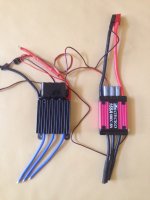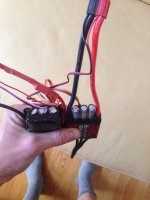FlyMike1
70cc twin V2
I can live with it. I never jam the throttle to full like that anyways. I probably wouldnt have notice unless I hadnt seen this thread. I have a few flights on both 125's and I havnt had the motor cutout due to quick throttle advance. But yeah if I quickly advance the throttle it will cut off for a second then start again around half throttle. If I jam it to full it stops at half throttle before I get to full and I have to pull all the way back to get it started again. This is on the ground. But like I said I dont do that kind of throttle moves and I dont see many that do. I'm going to keep them and have fun. 3DNater flew my plane today. I have video I will post later. It does have great throttle advance used normally. If that makes sense.


